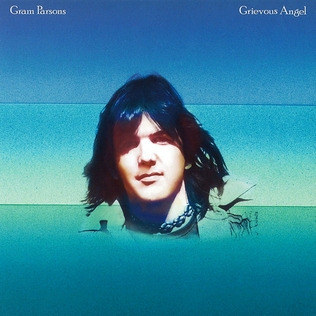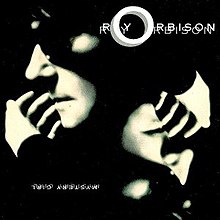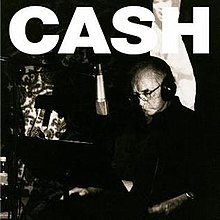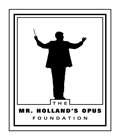« Vinyl Releases of the Week: December 28, 2011 | Home | Top-Selling Vinyl Releases of 2011 »
Top 10 Posthumous Albums
Post By: Katherine.Eleanor
The recent release of the late Amy Winehouse’s Lioness: Hidden Treasures got me thinking about posthumous albums. How, when done out of love and respect, they can be a true artist tribute and a treasure to any fan; and how they can just as easily be a shameless attempt on the part of the record label to cash in on the departed. These albums that follow stand out for being essential entries in the artists’ discographies (as well as in every vinyl collection). In loving memory of the musicians we lost in 2011.
 #10) Sublime – Sublime (1996)
#10) Sublime – Sublime (1996)
This album often gets overlooked on posthumous best-of lists. Sublime’s third, it was to be the Long Beach band’s major label debut and was completed just before lead singer/guitarist Bradley Nowell died of an overdose. It indeed proved to be Sublime’s mainstream breakthrough, going multi-platinum and dominating alternative rock radio with songs like “Wrong Way,” “Santeria,” and “What I Got.” A classic reggae-punk album.
 #9) Tupac – The Don Killuminati: The 7 Day Theory (1996)
#9) Tupac – The Don Killuminati: The 7 Day Theory (1996)
There are a few names that immediately come to mind when talking about posthumous albums, and Tupac Shakur’s is one of them. His posthumous discography is epic and easily outnumbers the work he produced during his lifetime. Shakur’s first posthumous release, The Don Killuminati takes the cake. It was recorded just before his fatal shooting in Las Vegas and released under the name Makaveli two months after his death. Introducing a darker, angrier side and a new sound that has come to define the rapper in the years since his passing, The Don Killuminati is considered one of the greatest hip-hop albums of all time.
 #8) Gram Parsons – Grievous Angel (1974)
#8) Gram Parsons – Grievous Angel (1974)
This former Byrd and Flying Burrito Brother overdosed a week after completing his second solo album, Grievous Angel. (He was 26 – just shy of joining the 27 Club.) Grievous Angel features Emmylou Harris as well as guests Bernie Leadon and Linda Ronstadt. What’s interesting about this release is that it was already “posthumous compilation-like” even prior to Parson’s death. Featuring only two (at the time) new songs, it gathered songs that were rejected from previous albums along with country standards and material Parsons had recorded with the Byrds, the Flying Burrito Brothers, and when he was a Harvard-based folksinger in the mid ’60s. The result is an alt-country masterpiece that brilliantly fuses country with psychedelic rock, pop, and R&B – what Parsons called “Cosmic American Music.”
 #7) Roy Orbison – Mystery Girl (1989)
#7) Roy Orbison – Mystery Girl (1989)
This album is amazing for a number of reasons. After the great success of his debut album with the supergroup the Traveling Wilburys (featuring Tom Petty, Bob Dylan, George Harrison, and Jeff Lynne), Mystery Girl is Roy Orbison’s first solo album in a decade and a major career comeback. Unfortunately he died from a heart attack before it was released and never got to enjoy its success. Collaborators U2 and Tom Petty did a spectacular job finishing it up, and as Orbison’s voice is still in great form, this album can hold up to any of his early-‘60s output. Just look at opener “You Got It” – it’s an Orbison classic!
 #6) Johnny Cash – American V: A Hundred Highways (2006)
#6) Johnny Cash – American V: A Hundred Highways (2006)
Johnny Cash’s American series – a series of Rick Rubin-produced albums that began in 1994 and is responsible for one of the biggest music comebacks in history – is pretty phenomenal as a whole. And this, its fifth installment is no exception. Released three years after Cash’s death, it became his first No. 1 album since 1969’s Johnny Cash at San Quentin. It’s obvious that Rubin handled the final arrangements, made after Cash’s death, with great respect for the Man in Black. He stuck to the aesthetic of the series, featuring minimal accompaniment with Cash’s baritone front and center, singing a mix of covers, originals, and re-recordings. June Carter Cash passed away during the recording sessions for this album and a sense of mortality pervades, made all the more powerful by Cash’s aging voice. Though an American VI would be issued in 2010, this remains the stronger collection.
 #5) Jimi Hendrix – Live at the Fillmore East (1999)
#5) Jimi Hendrix – Live at the Fillmore East (1999)
An elite member of the 27 Club, Jimi Hendrix has one of the most massive posthumous discographies of all time. And while there are numerous releases that mine every inch of his vaults for buried treasure, this live recording of his performances at the iconic venue with the Band of Gypsies on December 31, 1969 and January 1, 1970 stands out from the rest. It captures Hendrix at his peak, just nine months before his death, and while it’s not the Experience backing him up, the sound is phenomenal. His renditions of “Machine Gun” and “Voodoo Child (Slight Return)” alone are nothing short of revelatory.
 #4) Otis Redding – The Dock of the Bay (1968)
#4) Otis Redding – The Dock of the Bay (1968)
Like Janis Joplin, Otis Redding had his biggest hit after death. In fact, “(Sittin’ On) The Dock of the Bay” is the first posthumous No. 1 single in history, recorded just days before Redding’s fatal plane crash outside of Madison, Wisconsin. Released in 1968, Redding’s sixth studio album is a collection of B-sides and singles dating back to July of 1965, including two previously unissued tracks from 1966 and 1967. While not the most cohesive, the album truly showcases the soul singer’s versatility and extraordinary talent.
 #3) Joy Division – Closer (1980)
#3) Joy Division – Closer (1980)
Joy Division had only released one album when its frontman and primary songwriter Ian Curtis committed suicide in May of 1980. Fortunately, the band had another album finished. The fact that Closer was completed in Curtis’ lifetime surely contributes to its stellar quality; it was, in reality, the band’s second album. However, there is no doubt that Curtis’ death amplified its impact. Embodying darkness and despair in its music, lyrics, and cover art, Closer is as haunting as it is flawless. It reflects the band’s own progression into lusher sonic realms, featuring more synthesizers (which the surviving members would wholeheartedly embrace with their next project, New Order). Making many best of-lists, Closer is just as vital to the post-punk movement as it is to the band’s legacy.
 #2) Janis Joplin – Pearl (1971)
#2) Janis Joplin – Pearl (1971)
Janis Joplin died of a heroin overdose during the recording sessions for Pearl, her fourth album, leaving one song without vocals. In her absence, producer Paul Rothchild put the finishing touches on what is now her most well-known album. Not only does Pearl stand out as the shining star in her catalog, it’s the album most people associate with Joplin. It features the a cappella “Mercedes Benz,” her powerful reading of “Cry Baby,” and her only No. 1 hit, a cover of Kris Kristofferson’s “Me and Bobby McGee.” Released four months after Joplin’s death, the album topped the charts and has since gone multi-platinum. Polished but still oozing with her raw passion and heartache, Pearl is a wonderful representation of Joplin and a magnificent album all around.
 #1) Nirvana – MTV Unplugged in New York (1994)
#1) Nirvana – MTV Unplugged in New York (1994)
MTV Unplugged in New York aired in December of 1993; Kurt Cobain committed suicide in April of 1994. The first Nirvana album released after his death, MTV Unplugged in New York is one of the most beloved and vital entries in the band’s catalog. In addition to featuring songs that don’t appear elsewhere, this live acoustic performance captures a naked intimacy and honesty that is extremely powerful, if not chilling. Here is this grunge band showing a softer, vulnerable side and playing a setlist of songs that no one expected – including Bowie, Lead Belly, Meat Puppets, and Vaselines covers. Between these, the stage banter, and the acoustic version of “About a Girl,” this album is absolutely priceless. Here’s my two cents: if you want to really get to know Nirvana, start here. One of the greatest albums of all time, it showcases this influential band’s emotional and musical depth like no other.
Join the Conversation: Post a Comment!
Topics: Artist Tributes, Music | No Comments »


